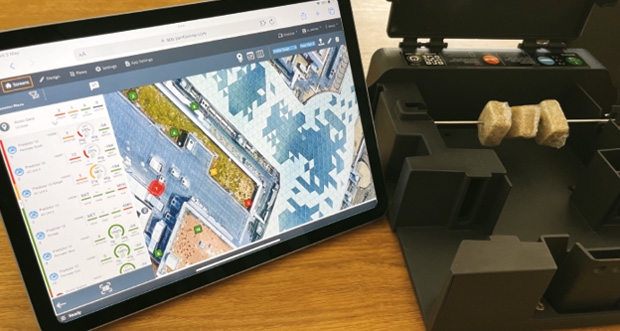Rob Burley-Jukes, a Director and Co-Founder of PestSense explains the evolution of Digital Pest control technology
While the impact of digital technologies has been seen across many industries, industries such as pest control which require significant manual effort have until recently been unable to gather information on what is happening on customer sites between one service visit and the next. As a result, there has been a lack of hard data – with industry norms and practices formulated around rules of thumb and proxy guidance in the absence of hard evidence – for example siting a rodent station every 10 metres.
Digital pest management offers the capability to gather data and present the evidence of cause and effect. By changing the terminology from ‘control’ to ‘management’ service delivery becomes far more proactive and enabled by the technology and means it can follow Integrated Pest Management (IPM) principles.
So, digital pest management has potential, but what are the attributes to look for in a digitally delivered service and what are the benefits?
- Continuous Remote Site Monitoring: There is an inherent risk reduction from 24×7 detection, tackling the problem early means fewer and less severe problems given the typical gestation period for rodents is 20 days.
- On-Site Schedule is Need-Based: Today a typical pest management professional (PMP) spends 60 per cent of their time on-site checking rodent stations yet only three to five per cent tend to have activity, whereas better
use of their professional skills would be to look for and pre-empt issues. PestSense’s system uniquely tracks bait consumption, enabling an assessment of the extent and type of rodent pest activity and whether a site visit is needed. This equates to fewer but more effective site visits. - Proof and Auditability: Digital provides data direct to customers and auditors and is available on what issues occurred when, their severity and how they were resolved. PMPs can demonstrate their effort spent on resolving issues, justify the investment and make recommendations to fix problem areas.
- Capable of FM Services Integration: Managing pest contracts should be more aligned and manageable alongside other FM services – not reliant on either a monthly treatment report or seeing mice in the corridor and then calling the pest contractor. FMs and corporate real estate need a platform they can scale, to manage their whole property estate as one. Estate managers should then be able to see the trends across all locations and stay informed of common pest problems, including seasonal activities or at certain times of day.
- Choice of Control Options: Most digital solutions are oriented around traps, however a digital system gives PMPs the flexibility to use bait as well and avoid the limitation of traps being one-time use devices. Non-toxic baits are typically employed, meaning baiting with toxicity can be used only as needed to rapidly control infestations.
CURRENT PRACTICES
Pest management industry working practices and economics will need to change to fully leverage the benefits of digital tech. Contracts are still largely based around charging for site visits, rather than on the demonstrable outcome of the facility being pest free. Yet those facilities who are already adopting this new model are seeing the benefits. Pest prevention is analogous to fire prevention but needs to move to the latter’s model of continuous monitoring. No one would purchase a smoke alarm that only visited the site once a month.





